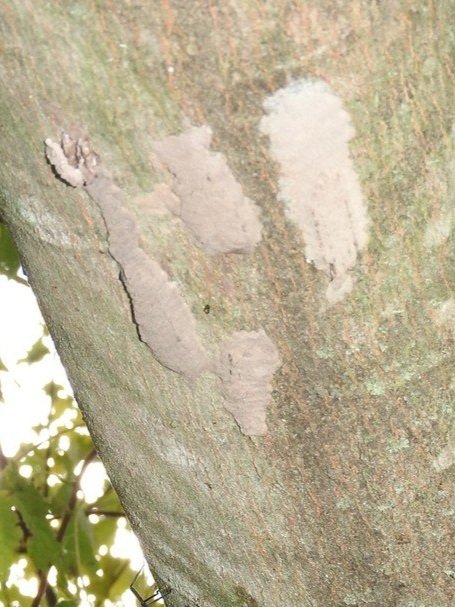
Invasive Species | Insects and Forest Pests
Spotted Lanternfly
The Spotted Lanternfly has NOT been found alive in New Brunswick to date. Please report suspected sightings immediately to us by emailing report@nbinvasives.ca or contact the Canadian Food Inspect Agency on their reporting webpage (click here).
Lawrence Barringer, Pennsylvania Department of Agriculture, Bugwood.org
Spotted Lanternfly
(Lycorma delicatula)
French common name: Fulgore tacheté
Spotted Lanternflies are invasive insects that feed on plant sugars, disrupting the normal nutrient circulation in the plants causing degradation and death over time. They are known to feed on over 70 different plant species but prefer fruit and ornamental trees; this makes them a serious threat to wine and fruit industries.
Characteristics
Behaviours: Nymphs and adults usually congregate in large numbers on the host plant, either at the base of the tree or in the canopy. They are easiest to locate at dawn and dusk when they are migrating up and down the tree.
Host trees(s): They prefer the invasive Tree of Heaven but can use a variety of hosts including native plants and agriculturally valuable species (ex: grapes, apples).
Eggs: Newly laid egg masses are brown and covered in a grey, waxy coating. Older egg masses lose the coating and look like seeds arranged in 4-7 vertical rows. These can be found on host trees, commercial and leisure vehicles, and outdoor equipment.
Nymph: Early-stage nymphs are black and white. Later stage nymphs are black, white and red.
Adult: Outer wings are approximately 25mm long and are pinkish-grey with black spots and black veins at the tips; when the forewings are open, the bright red underwings are visible.
Richard Gardner, Bugwood.org
Richard Gardner, Bugwood.org
Key ID Features
Emelie Swackhamer, Penn State University, Bugwood.org
Outer wings that are clear with black spots and inner wings that are bright red
Chris Evans, University of Illinois, Bugwood.org
Muddy-grey egg masses that look like spots of mud
Rebekah D. Wallace, University of Georgia, Bugwood.org
There are no common look-a-like insects native to North America
Resources
Spotted Lanternfly - Canadian Food Inspection Agency






